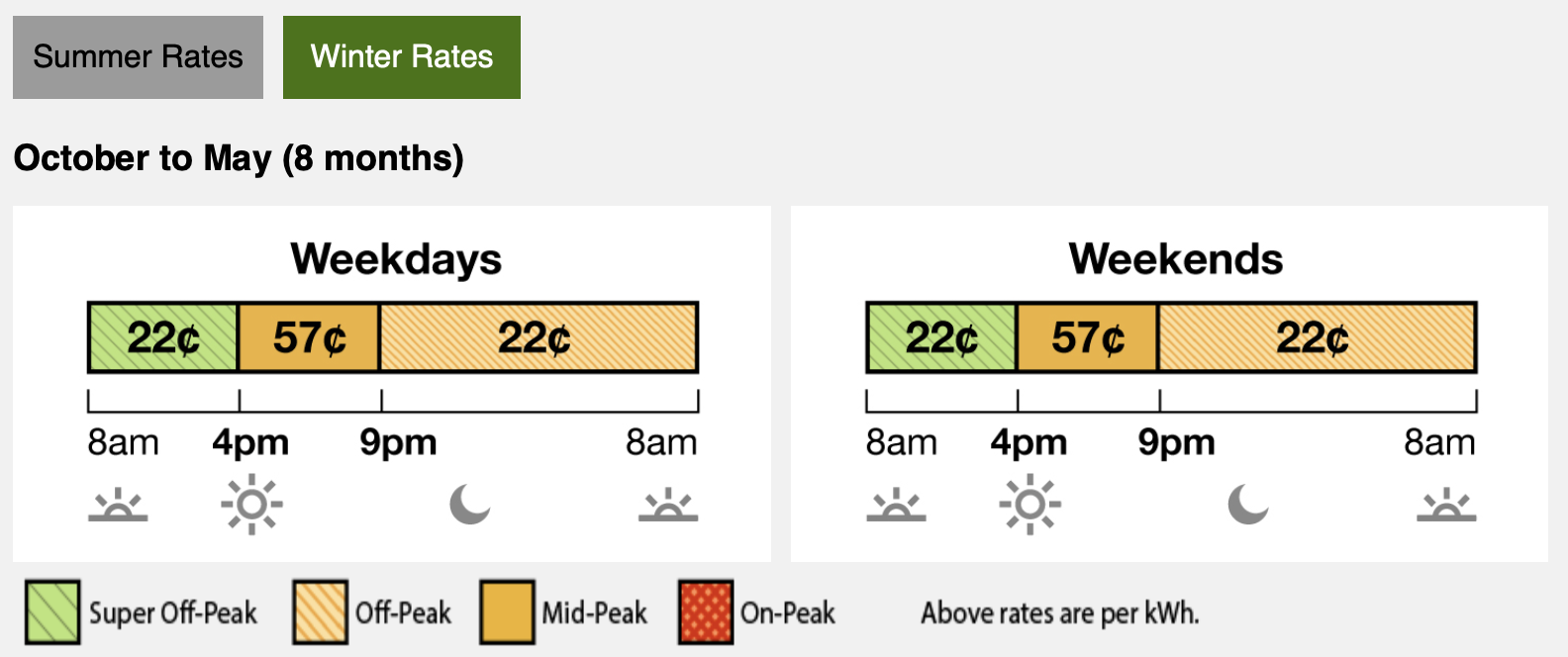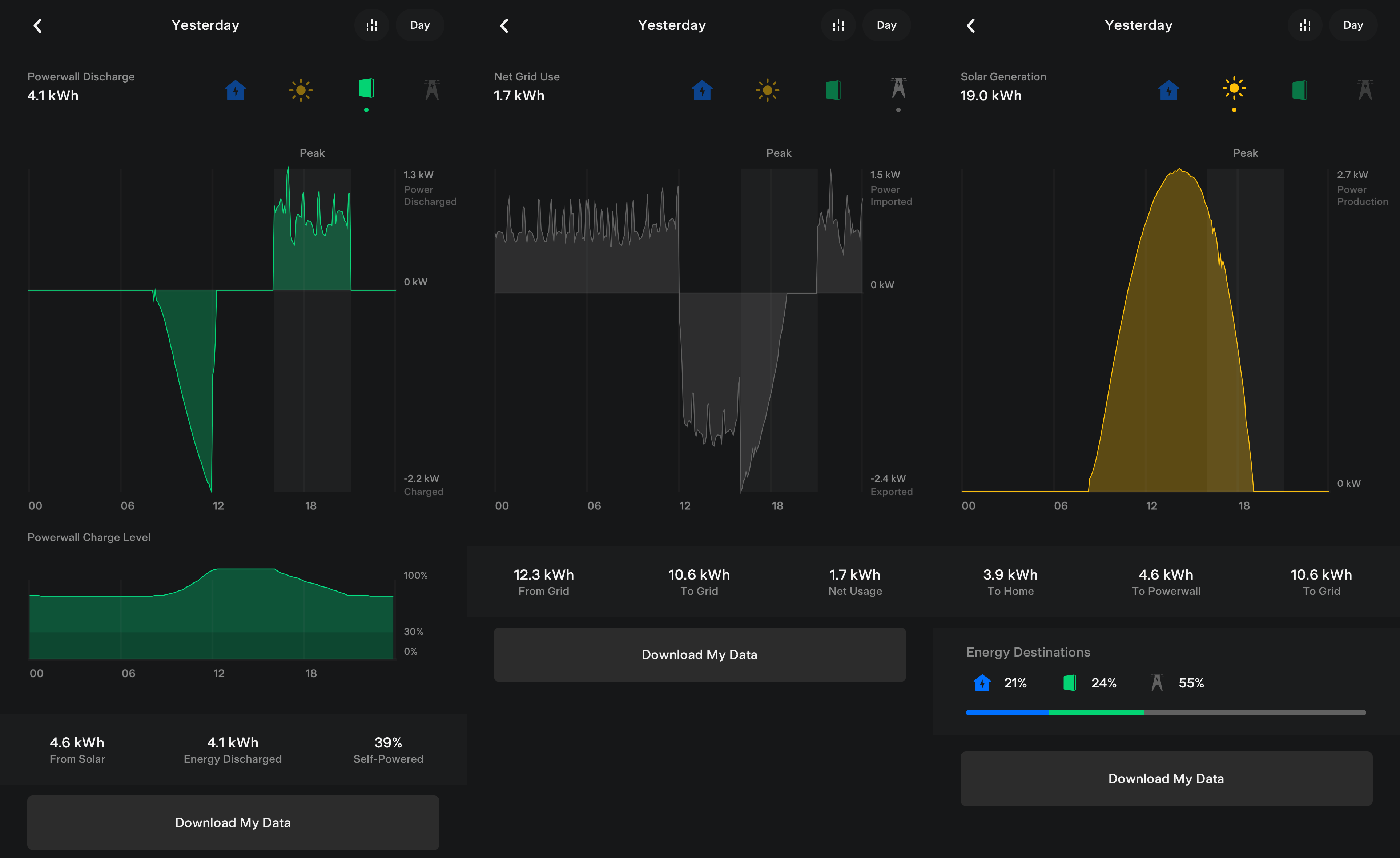In November 2022, I bought a new construction house in Orange County, California which included a 3kw solar array. Additionally, I purchased a $14,700 option to purchase a Tesla Powerwall. The solar array is estimated to be $9,740 retail by the installer. I didn’t have a choice with the solar array - I didn’t even have the option to add more solar panels. However, was my $14,700 Tesla Powerwall a good purchase decision?
Goal
The primary reason was I got a Powerwall was that if I didn’t, I would be thinking about getting one every day, which would take up a lot of brain capacity. The cost of using my brain capacity on it would cost much more than the amortized cost of purchasing the Powerwall, as you’ll see below. The second goal was for cost savings, especially since the builder wouldn’t allow me to add more solar panels.
The final goal was for backup during outages as I experienced quite a few outages living in Westwood, Los Angeles. Interestingly, I found SCE to be a much more reliable electricity provider than LADWP. Even if I broke even in cost savings, I’ll be happying knowing that I won’t be susceptible to power outages except for a few appliances.
Set up
I was disappointed with how my Powerwall was set up because it did not provide whole-home back up to my fully electric house. Instead, it was set up as a partial-backup with the following bypassed:
- EV chargers
- HVAC
- Washer & dryer
- Water heater
I don’t mind that my EV chargers bypass the Powerwall, but was quite disappointed to learn that my HVAC, washer/dryer, and water heater were. I can choose to charge my EV at night, but being price sensitive to running the AC, running the washer/dryer, or taking a shower during the peak hours of 4pm-9pm is quite annoying. If the Powerwall backed up my HVAC and washer/dryer as well, I would be saving a lot more money.
However, I don’t think a whole-home backup would even be possible with just one Powerwall. There’s no mechanism for it to communicate with the other appliances (except for the EV) to turn off or lower power usage during an outage, so there’s a chance that the appliances would pull too much energy and break something. You’d most likely need multiple Powerwalls to make sure this doesn’t happen as well as more solar panels to charge them.
Time-of-use


For Southern California Edison, the peak hours are between 4pm and 9pm, which is around when solar panels stop generating electricity. The Powerwall’s time-of-use operational mode does a great job at maximize savings by:
- Charging the Powerwall during off-peak hours
- Discharging the Powerwall to the house during on-peak hours
- Exporting all solar energy to the grid during on-peak hours
#1 & #2 saves the ~$0.30 difference per kw between on-peak and off-peak pricing. Thus, if I offset 4kw that day, that’s $1.20 saved!
#3 exports all the energy generated by the solar panels to the grid. If you only had solar panels (i.e. no Powerwall) that generated, say, 5kw during the peak hours, but your house used 3kw, your solar panels would only export 2kw to the grid at the on-peak rates. However, with a Powerwall, the 5kw will be exported to the grid at the on-peak rate and the 3kw used by your house will be discharged from the Powerwall using an off-peak rate, maximizing savings!

Monthly Solar Generation and Powerwall Discharge
My monthly solar generation and Powerwall discharge according to the Tesla app, which only includes electricity that passes through the Powerwall:
| Month | Solar Generated (kWh) | Powerwall Discharge (kWh) |
|---|---|---|
| 2023 January | 238.5 | 141.8 |
| 2023 February | 308.4 | 149.9 |
| 2023 March | 388.8 | 144.4 |
Note that these are winter months, so the solar generation should increase significantly in the summer months.
Tax Rebates
In total, I was able to get $9,072 in rebates from my $24,440 ($9,740 + $14,700) system, making the net price of the system to be $15,368.
Federal
The U.S. governments provides a 30% tax credit on solar, which I took for both my solar panels and Powerwall.
This amounted to $24,440 * 30% = $7,332.
The rebate for the Powerwall alone was $4,410.
California
SGIP is a California program that incentivizes installing energy storage systems. My Powerwall was only eligible for a $1,740 rebate.
Monthly Savings & ROI
Let’s calculate how much the Powerwall is saving me and whether it was worth it. The Powerwall cost $14,700, which I was able to bundle into my 30 year, 3.75% mortgage. This ends up being about $68.08 per month with interest.
After the tax rebates of $4,410 and $1,740 for my Powerwall, the net price is $8,550. Even though I amortized the Powerwall over 30 years at a low interest rate, I got a rebate for almost 42% of it within the first year! The $6,150 rebate’s portion of the loan is like taking out a tax-deductible loan at 3.75%, which I would happily take at this time, so we can consider it income positive and ignore it for the rest of the calculations.
Due to the rebates, to break even, we can lower our target monthly savings of $68.08 to $39.60, which is how much a 30 year loan for $8,550 at 3.75% is. Cost-shifting 150 kWh every month at a price difference of about $0.30 equals $45 per month saved just from the Powerwall. It’s worth it, currently barely, but the savings should increase in the future as the price difference in on-peak and off-peak increases as CA adds more solar panels.
If it weren’t for the tax credits, this would not be economically feasible at all. Mortgage interest rates reaching 6% also makes it economically infeasible. If you aren’t able to roll it into your mortgage like I did, it would probably be economically infeasible as well as the rates are probably higher, the loan term is probably shorter, and the interest wouldn’t be tax-deductible.
Extra Savings I Skipped
Because the loan for the Powerwall is rolled into my mortgage, the interest portion is tax-deductible up to a limit.
$14,700 over 30 years at 0% interest is about $40.83/month, so the payment’s average interest portion of about $68.08 - $40.83 = $27.25 is tax-deductible.
Additionally, the Powerwall allows my solar panels to return more energy to the grid during peak hours. However, it would be difficult for me to calculate how much money this actually saved me because I don’t have easily-accessible hourly data.
Also, note that the solar panels and the Powerwall are excluded from property tax assessments. Not really a savings, just not an additional cost.
Monthly Savings According to Tesla
The Tesla app tells me an estimate amount of savings of my entire system. The numbers also don’t add up - a lot of times, it says that I used grid energy during peak hours, but individual days don’t show an grid energy usage during peak hours. I just don’t bother looking at Tesla’s estimated savings number at all.

I’m pretty sure I am saving more than what Tesla tells me since the amount of electricity generated from my solar panels for the month alone almost adds up to the estimated savings Tesla shows.
Other Features
Storm Watch
Tesla has a Storm Watch feature which fully charges your battery before a storm. However, I live in Santa Ana, and every Santa Ana Wind triggers a Storm Watch, which is quite often and quite annoying. Additionally, Storm Watch overrides the Time of Use plan, so it may charge your battery at peak hours, costing quite a bit of money. I disabled it and only enable it temporarily when I want to fully chage my Powerwall from the grid.
EV Charging when Off-Grid
The Powerwall has a setting for how to charge your EV during an outage. However, as mentioned above, my EV chargers bypass my Powerwall, and there is no setting to disable this. Of course, this really doesn’t matter because my EV wouldn’t charge during an outage, but it is annoying that I can’t disable it.
Worth it for me, maybe not for you
Overall, I am happy with my purchase, but it would be difficult for me to recommend it for most people from a cost-savings perspective. Like I mentioned above, this is only economically feasible for me because I was able to roll it into my 30 year mortgage with a low interest rate.
Interested in buying a Tesla Powerwall? Use my referral code!